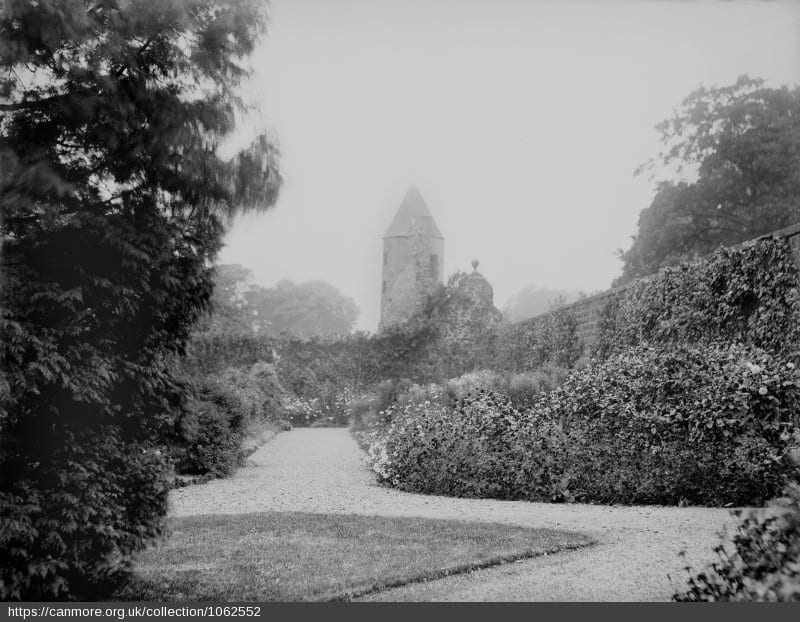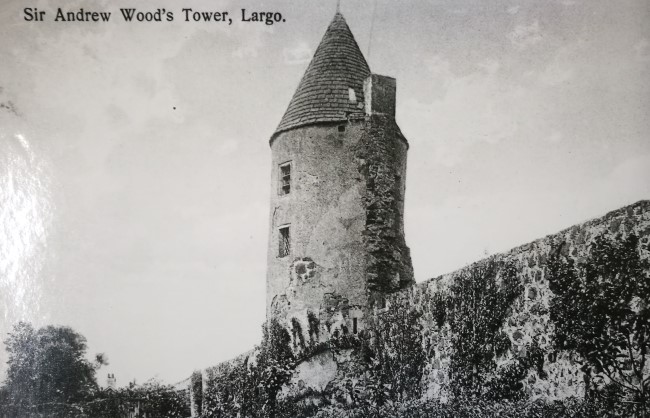The 1st Independent Polish Parachute Brigade
(1 Samodzielna Brygada Spadochronowa)
Sir Andrew Woods Tower
The Beginning Of Largo House
 © www.swoopingeagle.com
© www.swoopingeagle.com
Many who research the 1st Independent Polish Parachute Brigade (1 Samodzielna Brygada Spadochronowa) quickly become obsessed with Largo House, Upper Largo, Fife where the unit was based.
It all starts with the question "What was this place before the 1st Independent Polish Parachute Brigade (1 Samodzielna Brygada Spadochronowa) came to it?" Very quickly, you become fully absorbed with the intriguing tale of this house, trying to get to the absolute truth of a very complex story.
I have spent hundreds of hours researching this place and believe the detail below to be the closest to the truth. The story of Largo House is intertwined with the story of the 1st independent Polish Parachute Brigade. It's impossible to tell one story without telling the other.
Buckle up, you are about to become immersed in the history of it and made an honorary member of the "Obsessed by Largo House" club"!
It Wasn't Always Largo House
You could be mistaken for believing that Largo House in Upper Largo, Fife, was the only house ever on the site.
However, the tale of Largo House has more twists and turns in it than a bowl of spaghetti pasta. It turns out there was another mansion there long before Largo House. Little is known about it but here is a summary of all the information I could find on it.
It all begins with Sir Andrew Woods Tower.
 © RCAHMS
© RCAHMS
Before Largo house - Sir Andrew Woods Tower & Mansion / Castle
Scotlands answer to Admiral Nelson, Sir Andrew Wood, was renowned for fighting the English in sea battles, he was ferocious and excelled at it. He is even regarded as the founder of the Scottish navy.
In 1482, King James III by way of recognition of his naval efforts (and also the "gratuitous and faithful services" Sir Andrew Wood undertook as his personal servant) gave him the "lands and village of Largo".
Sir Andrew Wood then set about building houses as well as a "fortalice" (a fortified house) in Largo (this cannot be his tower, see further on for reasons why). The purpose was to "resist and expel the English pirates".
Then, in 1491, in a charter under the great seal dated the 18th of May 1491, James the 4th (James III was by now dead as of 1488) gives Sir Andrew Wood permission to build a castle in the grounds of what we now know as Largo House with iron gates.
Notably, the "English Pirates" that invaded were caught and kept as Masons by Sir Andrew Wood, so perhaps we can assume that it was "English Pirates" that built the tower and original mansion/castle? (Source: https://www.undiscoveredscotland.co.uk/usebooks/fleming-eastneuk/chapter15.html)
Circa 1490, a licence was granted to Sir Andrew Wood, to build a tower on the grounds of what is now Largo House. The tower was then built with an extensive elaborate and grand mansion, some say castle, being added to it.
Sir Andrew Wood then built a canal between this mansion and the local church, 300 yards away, so that he could be rowed to church in his barge, presumably as a naval hero he was obsessed with boats. The canal is long gone, although there is some evidence of it behind the local church.
In time, the tower itself came to be known as "Sir Andrew Woods Tower". Then, in 1611, the tower and mansion changed hands with Peter Black, a descendant of Sir Andrew Wood, taking ownership of it.
Then, Peter Black sold the estate to Alexander Gibson of Durie.
The fate of the original mansion will be covered in the next section however Sir Andrew Woods Tower still exists to this day, albeit, it is dilapidated and in dire need of restoration.
 © RCAHMS
© RCAHMS
The East Neuk Preservation Society recently raised funds for some restoration and re-roofing of Sir Andrew Woods Tower although concerns over Sir Andrew Woods Tower current condition continues.
Further Reading
- Some further info on Sir Andrew Woods Tower can be found here: https://lundinlinks.weebly.com/blog/sir-andrew-woods-tower
Please Donate!

Uncover The Past - Support The Future
Each year, about 12,000 people visit this website to trace their Polish ancestry, uncover family stories, and connect with their roots. I believe that history should be accessible to all - but keeping this website alive comes at a cost, 7 years @ £1000 per year with has left a £7000 dent...with only £72 in total donated up to 11/06/25 😱😱😱
Every detail you uncover and every story you piece together helps you piece family history together. Please donate if you found this site useful, help me keep the site alive! Thanks! Jason Nellyer (Researcher & Site Owner)